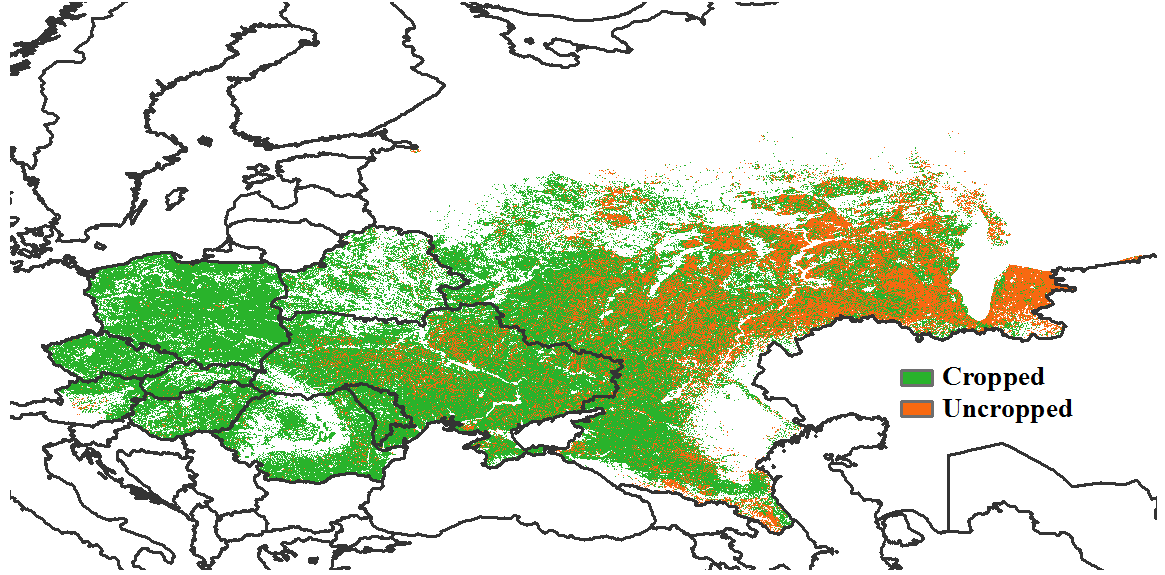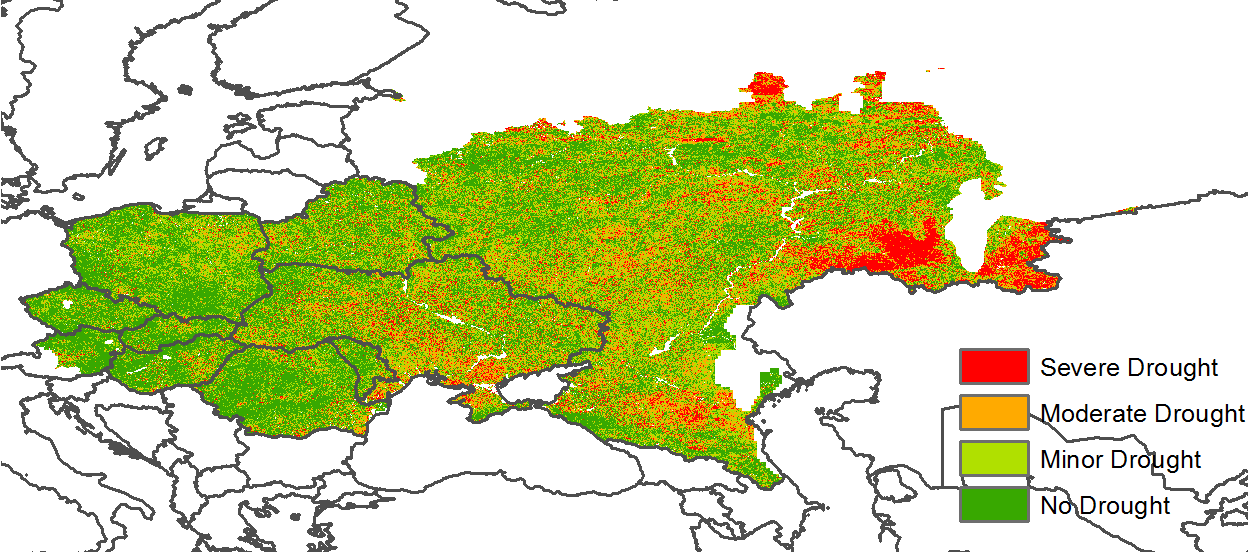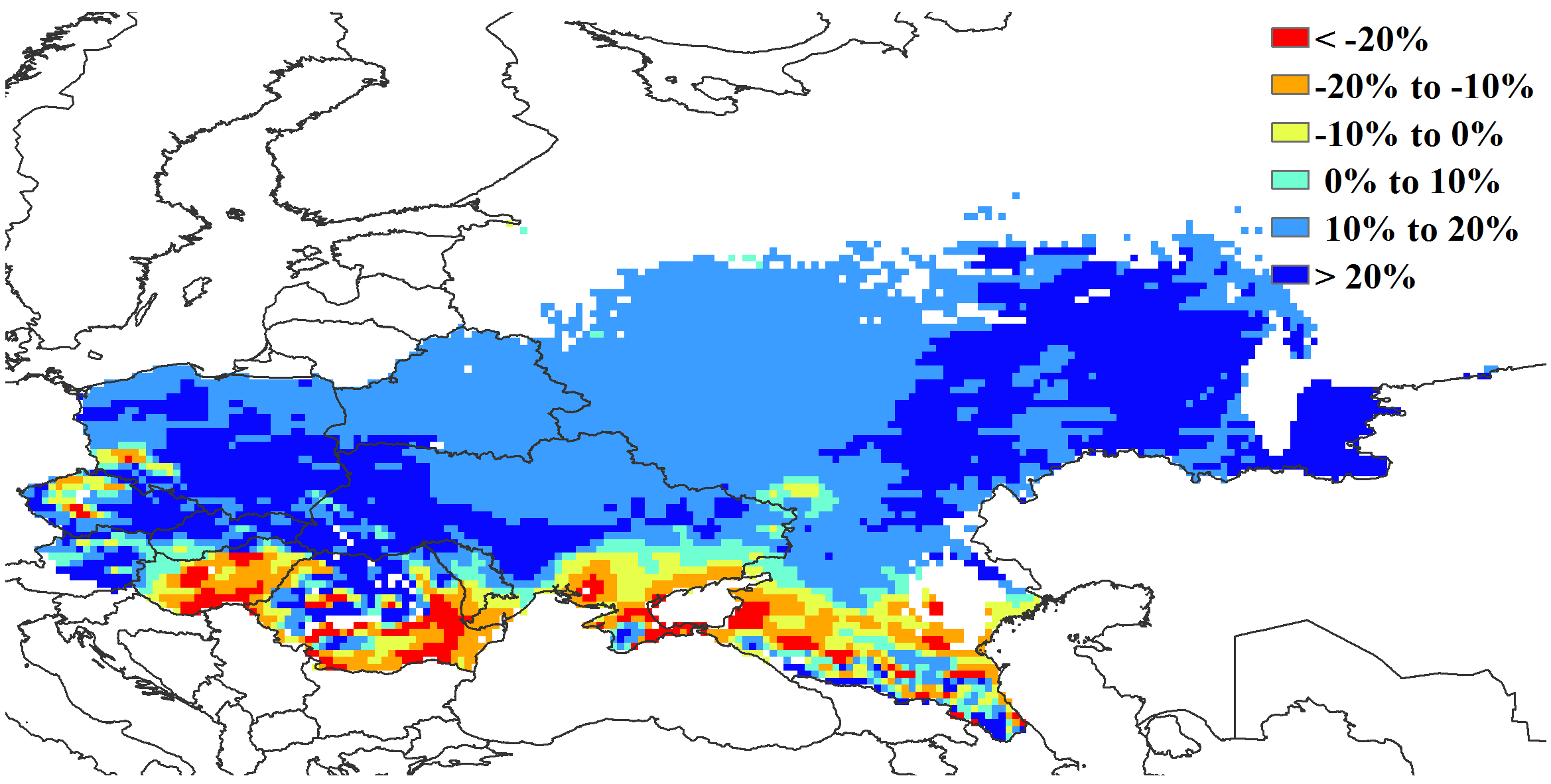
Bulletin
wall bulletinMenu
- Overview
- Country analysis
- Afghanistan
- Angola
- Argentina
- Australia
- Bangladesh
- Belarus
- Brazil
- Canada
- Germany
- Egypt
- Ethiopia
- France
- United Kingdom
- Hungary
- Indonesia
- India
- Iran
- Italy
- Kazakhstan
- Kenya
- Cambodia
- Sri Lanka
- Morocco
- Mexico
- Myanmar
- Mongolia
- Mozambique
- Nigeria
- Pakistan
- Philippines
- Poland
- Romania
- Russia
- Thailand
- Turkey
- Ukraine
- United States
- Uzbekistan
- Viet Nam
- South Africa
- Zambia
- Algeria
- Kyrgyzstan
- Lebanon
- Syria
Authors: zxiwang | Edit: tianfuyou
This reporting period covers the over-wintering and spring green-up periods for the important winter cereals, and the sowing periods of the spring crop in the Central Europe and Western Russia Major Production Zone (MPZ). Crops in this region are mainly rainfed and agro-meteorological conditions play a crucial role. Overall crop growth conditions in the MPZ were above average based on the interpretation of agro-climatic and agronomic indicators monitored by Cropwatch (Fig. 2.6).
CropWatch agronomic indicators show that the crop production index of the MPZ was 1.11, an increase of 0.08 (ΔCPI +0.08%) above the past 5YA and a decrease of 0.02 from the previous year, indicating that the crop growth situation in the region is comparabel to last year's. The average maximum VCI for the MPZ reached a value of 0.94 during this reporting period, and the spatial distribution shows that areas with maximum VCI values below 0.5 are concentrated in in southwestern Russia and central Ukraine; also, the maximum VCI values between 0.5 and 0.8 are concentrated in south-central Russia, east-central Ukraine and north-western Poland; most of the other regions have maximum VCI values above 0.8. About 75% of arable land was cropped, which was 6.5% higher than the recent 5YA average in the whole MPZ. The uncropped areas of arable land were mainly concentrated in central Ukraine and the regions neighboring the Ural, which are too cold for crop production during the winter months. The VHI minimum map shows that the MPZ of southern Russia and parts of central Ukraine were affected by short spells of drought conditions, which is also consistent with the spatial distribution of regions with values below 0.5 in the spatial distribution map of maximum VCI.
CropWatch agroclimatic indicators show that the rainfall in this MPZ was higher by 4.4%. According to the spatial distribution of rainfall profiles, with the exception of mid-February to late March, the overall MPZ had significantly higher than average precipitation, overall precipitation fluctuated above and below the average across the different regions of the MPZ. Only in central and western Russia, central Ukraine and Belarus, precipitation rebounded significantly in early April, and other regions were below the average level. Insufficient accumulated precipitation is not conducive to the growth of winter crops, and short-term drought caused by insufficient precipitation should be vigilant, which may have adverse effects on crop yield and quality. At the same time, the MPZ experienced relatively mild weather (ΔTEMP +2.4°C), and lower solar radiation (ΔRADPAR -3.9%). As shown in the spatial distribution of temperature profiles, the MPZ areas experienced significantly warmer-than-usual conditions from late January to February, and the period between mid-March and mid-April; while significant below-average temperatures were mainly observed in Poland, Belarus, northern Ukraine and central and western Russia between early January and mid-January (green areas in Fig. 2.6b), and temperatures in Southern Russia, southeastern Ukraine (blue areas in Fig. 2.6b) were significantly below average between late February and mid-March. Below-average temperatures in late April also occurred in Belarus, Poland, the Czech Republic, Slovakia, Austria, Hungary, Romania, west-central Ukraine, and a few parts of southwestern Russia.
Potential biomass was 12.6 percent above average. The potential biomass departure showed that the lowest BIOMSS values (-20% and less) were observed for Hungary, Southern Romania, southeastern Ukraine, southwestern Russia. In contrast, BIOMSS was above average (+10% and more), mainly in Ukraine, Poland, most of Belarus and western Russia.
Generally, the conditions of winter crops in the MPZ were favorable.
Figure 2.6 Central Europe to Western Russia MPZ: Agroclimatic and agronomic indicators, January 2024 - June 2024.

a. Spatial distribution of rainfall profiles b. Profiles of rainfall depature from average(mm)

c. Spatial distribution of temperature profiles d. Profiles of temperature depature from average(℃)

e. Maximum VCI

f. Cropped and uncropped arable land

g.VHI Minimum

h. Potential biomass departure from 5YA
![]()
i.Crop Production index time series chart
